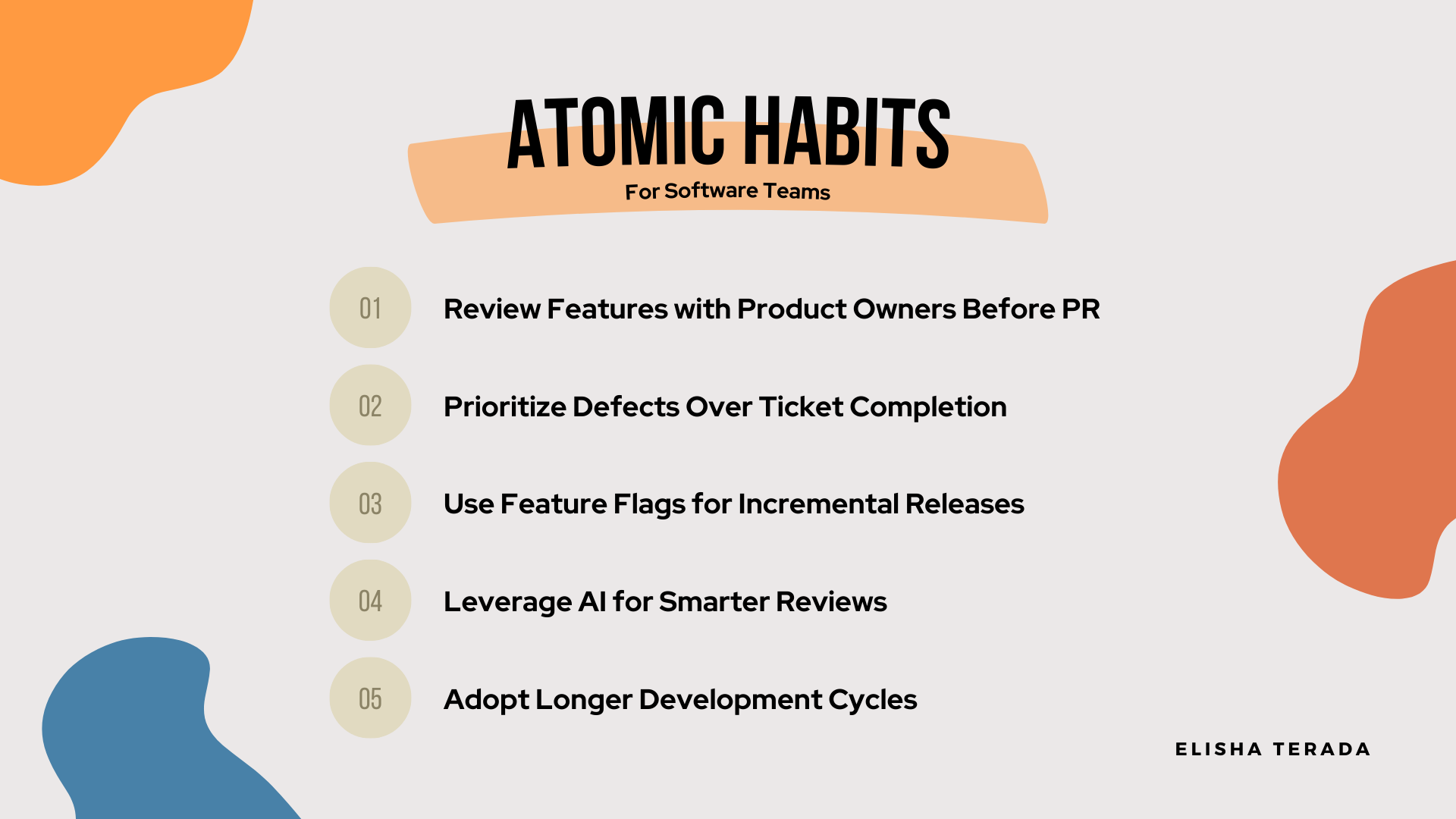Atomic Habits for Software Teams: Build Better Systems
You don’t rise to the level of your goals; you fall to the level of your systems. Learn how to redesign your software team’s environment to build habits that prioritize quality, collaboration, and sustainable value delivery over rushed deadlines and technical debt.

“You do not rise to the level of your goals. You fall to the level of your systems.” – James Clear, Atomic Habits
In software teams, behaviors are often shaped by the systems they work in. A common pitfall is the rush to complete tasks on time, leading to poor review practices and an accumulation of technical debt. To combat this, leaders must design environments that encourage better habits systematically.
5 Strategies to Build Better Team Habits
1. Review Features with Product Owners Before Peer Code Review
Ensuring the "how" aligns with acceptance criteria before moving to code review prevents rework. This saves time and avoids unnecessary back-and-forth if expectations are unclear or unmet.
2. Prioritize Defects Over Ticket Completion
Shipping features isn’t about meeting arbitrary deadlines; it’s about delivering consistent value. Replace velocity metrics based on story points with metrics that account for user value delivered, adjusted for defect rates and regressions.
3. Use Feature Flags for Incremental Releases
For new features, release them under feature flags. This reduces the pressure of large pull requests and enables continuous feedback from Product Owners and stakeholders. Incremental feedback ensures the right features are built correctly over time.
4. Leverage AI for Smarter Reviews
Incorporate AI tools to suggest code refactors and detect potential defects early. AI-powered code editors and repository integrations provide automated reviews, allowing teams to focus on higher-level concerns.
5. Adopt Longer Development Cycles
Consider moving away from rigid two-week sprints. The Shape Up method by Basecamp encourages longer cycles for meaningful work and dedicated cool-down periods for addressing technical debt. This creates a sustainable pace for quality output.
Final Thought
Every team’s habits reflect the systems they operate within. Leaders must design systems that prioritize quality, collaboration, and long-term value over short-term outputs. Are you empowering your team with systems that foster the right habits?
What’s one systematic change you’ve made that helped your team improve their habits? Let me know!